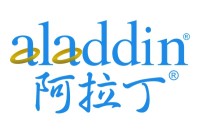Using the iHOP Information Resource to Mine the Biomedical Literature on Genes, Proteins, and Chemical Compounds
互联网
- Abstract
- Table of Contents
- Figures
- Literature Cited
Abstract
The iHOP (Information Hyperlinked over Proteins) resource employs sophisticated text?mining methods to assist researchers in their quest for information on specific genes and proteins, their physical interactions and regulatory relationships, their relevance in pathologies, and their interactions with chemical compounds. iHOP parses thousands of PubMed documents every day and collects information specific to thousands of different biological molecules. Rather than providing long lists of entire abstracts upon keyword searches, iHOP selectively retrieves information that is specific to genes and proteins, and summarizes their interactions and functions. In iHOP, with genes and proteins acting as hyperlinks between sentences and abstracts, a large part of the PubMed knowledgebase becomes a giant navigable information network. Curr. Protoc. Bioinform. 20:1.16.1?1.16.16. © 2007 by John Wiley & Sons, Inc.
Keywords: information resource; literature network; PubMed hyperlinked; gene?guided exploration
Table of Contents
- Introduction
- Basic Protocol 1: Searching for a Specific Gene in iHOP
- Basic Protocol 2: Exploring Sentence Views in iHOP
- Basic Protocol 3: Exploring the Gene Definition View in iHOP
- Basic Protocol 4: Launching Enhanced PubMed or Google Queries from iHOP
- Basic Protocol 5: Exploring Gene Overview Pages in iHOP
- Basic Protocol 6: Changing Viewing Options and Large Scale Data Sources
- Basic Protocol 7: Creating a Logbook or Gene Model in iHOP
- Commentary
- Literature Cited
- Figures
Materials
Figures
-

Figure 1.16.1 The iHOP (Information Hyperlinked over Proteins) resource provides literature information on thousands of genes as a navigable gene network. The front page provides the entry point to the network by searching a specific gene. View Image -

Figure 1.16.2 A disambiguation page that allows the user to identify the exact gene of interest. In this example, fifteen genes from different organisms matched the ambiguous query EGFR. View Image -

Figure 1.16.3 Illustration of the “minimal information view,” which contains general information for a given gene, here EGFR; name and synonyms, links to external resources (e.g., PDB, Uniprot), and links to homologous genes in iHOP. View Image -

Figure 1.16.4 A screenshot of the “most recent information view” on EGFR. The most information‐rich sentences of the past two years are shown in this view and genes, chemical compounds, and MeSH terms are highlighted. View Image -

Figure 1.16.5 An illustration of an abstract in the iHOP system. Biomedical entities are highlighted and linked to their corresponding summary views. The focused sentence is underlined in red. View Image -

Figure 1.16.6 A screenshot of the “defining information view” on EGFR. The most informative sentences on all associations of EGFR and chemical compounds and MeSH terms, which were found in PubMed, are shown. Biomedical entities are highlighted and linked. View Image -

Figure 1.16.7 Navigation trail in iHOP. When browsing from one entity to another, the current entity is always highlighted in red and the previous in purple. The sentences containing the current and the previous entity are ranked to the top and are separated from other sentences by a horizontal line. View Image -

Figure 1.16.8 The option panel for an enhanced Google or PubMed query. Enhanced queries can include different synonyms and orthographic variations to increase recall. View Image -

Figure 1.16.9 Screenshot illustrating the summary page of the “defining information view” on EGFR. According to the current filter settings, it lists all chemical compounds and the number of concurrences with EGFR in the literature. View Image -

Figure 1.16.10 A screenshot of the “interaction view” on EGFR, which contains all gene‐gene associations of EGFR found in PubMed. Sentences are ranked according to frequency, impact, date of publication, and optional parameters. Red flasks at the right indicate experimental evidence on specific interactions. View Image -

Figure 1.16.11 The selection panel for global display settings and experimental data sources, which will be effective throughout the system. View Image -

Figure 1.16.12 Illustration of a gene model or log book created by the user. Sentences can be added to the gene model over the course of literature exploration. Associations in the collected sentences are illustrated in an interactive graph. View Image
Videos
Literature Cited
| Hoffmann, R. and Valencia, A. 2004. A gene network for navigating the literature. Nat. Genet. 36:664. | |
| Hoffmann, R. and Valencia, A. 2005. Implementing the iHOP concept for navigation of biomedical literature. Bioinformatics 21:252‐258. | |
| Hoffmann, R., Krallinger, M., Andres, E., Tamames, J., Blaschke, C., and Valencia, A. 2005. Text mining for metabolic pathways, signaling cascades, and protein networks. Sci STKE 283:21. | |
| Internet Resources | |
| http://www.ihop‐net.org | |
| The iHOP homepage. Online version by Hoffmann, R. (2004‐2007). | |
| http://www.ihop‐net.org/UniPub/iHOP/webservices/ | |
| API that enables the integration of iHOP functionalities in bioinformatics workflows. |









